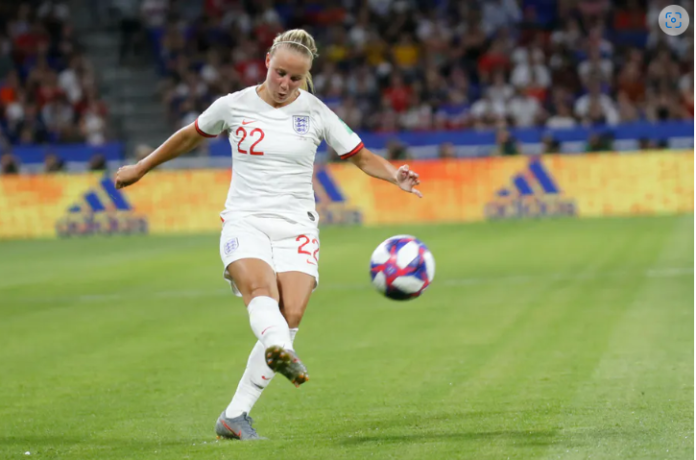
Christina Philippou, University of Portsmouth
Just over a hundred years ago, women in England were effectively banned from playing football. The Football Association ruled in 1921 that clubs were not allowed to let women play in their grounds, ensuring there could be no recognised league or organisation in which female players could practise and develop. The ban lasted almost 50 years.
Fortunately, things look a lot different in 2022. The Uefa Women’s Euro 2022 tournament is about to start, featuring 31 matches with players from 16 countries, and record-breaking ticket sales.
And as interest grows, so too does the commercial potential of women’s football. But there is more to the business side of a sport than increased revenue. It is also about how that money is spent, the way the game is developed, and how the fans, players and broadcasters are treated.
And in this regard, the influence of the men’s game is clear – from the pitch to the boardroom.
For example, in England at least, for a women’s side to be successful, it is almost always linked to a well-known men’s team. When the current Women’s Super League (WSL) was established in 2010, it was made up of eight teams. Of those, five were affiliated with professional men’s sides from the Premier League.
Last season saw 12 teams compete, with ten affiliated to Premier League teams and the other two (Birmingham City and Reading) linked to sides in the Championship, the second tier of men’s English club football.
And as a whole, football still has very little gender diversity in the boardroom. Recent research shows that two-thirds of clubs in the top four leagues of the men’s professional game have all-male boards. In the WSL, seven of the 12 sides have all-male boards.
Female representation at board level is just 11% in the Premier League, 4% in the Championship, and 19% in the WSL. This is despite plenty of evidence which shows that good governance leads to good financial outcomes, and that diversity in the boardroom is linked with both.
Those financial outcomes are a vital part of football’s future – for both men and women – and are by no means secure in many cases. In a recent assessment of the financial sustainability of men’s football, the University of Liverpool’s Kieran Maguire and I looked at various financial metrics (such as liquidity risk and spending no more than 70% of income on wages) and found that only three of the Premier League clubs were not at risk of breaching at least one.
Due to a lack of publicly available information, we are unable to carry out a similar analysis for WSL sides. But we can see that five WSL sides are affiliated to men’s teams whose holding companies (the “head company” of the entire club) show risk in the majority of the metrics. This is bad news for the women’s teams, which are often seen as an “add-on” and therefore an easy target for cost cutting.
Equality and equity
Another way to assess financial sustainability is to look at equity, or the owners’ stake in the club. For businesses to be considered viable, equity should be positive, which means a club should be worth something. But in football we often see negative equity, where the owner needs to keep putting money in for the club to be able to continue to function.
In the WSL, only three clubs had positive equity in the 2020-21 season, meaning that the remaining nine were technically insolvent. In normal industries they would no longer exist. https://www.youtube.com/embed/xcNbcj9wvzU?wmode=transparent&start=0
And while it is clear that the affiliated men’s teams continue to support their women’s teams (through grants and loans), of the nine negative equity women’s teams, four also showed negative equity in their men’s teams, which is a worrying scenario – especially given the state of finances in the men’s game.
Eight of the original 22 Premier League members have gone into administration since the Premier League began. And if the holding company of the club goes into administration, it is very likely that the women’s team will also do so.
It seems then, that affiliation with men’s teams brings both risks and rewards for women’s football. Women’s club sides seem increasingly unlikely to succeed at the top level without a men’s team alongside them – but therefore lack economic independence.
There are signs of progress, however. The UK government have announced a review into how the women’s game is run, and there are various official codes in place which encourage greater diversity and improved governance.
But there is plenty of ground to make up, in terms of funding, representation and agency. To ensure that Euro 2022 leaves a lasting legacy, it is vital that women’s teams are more widely seen as clubs in their own right – with both the risks and rewards that carries.
Christina Philippou, Principal Lecturer, Accounting and Financial Management, University of Portsmouth
This article is republished from The Conversation under a Creative Commons license. Read the original article.




















